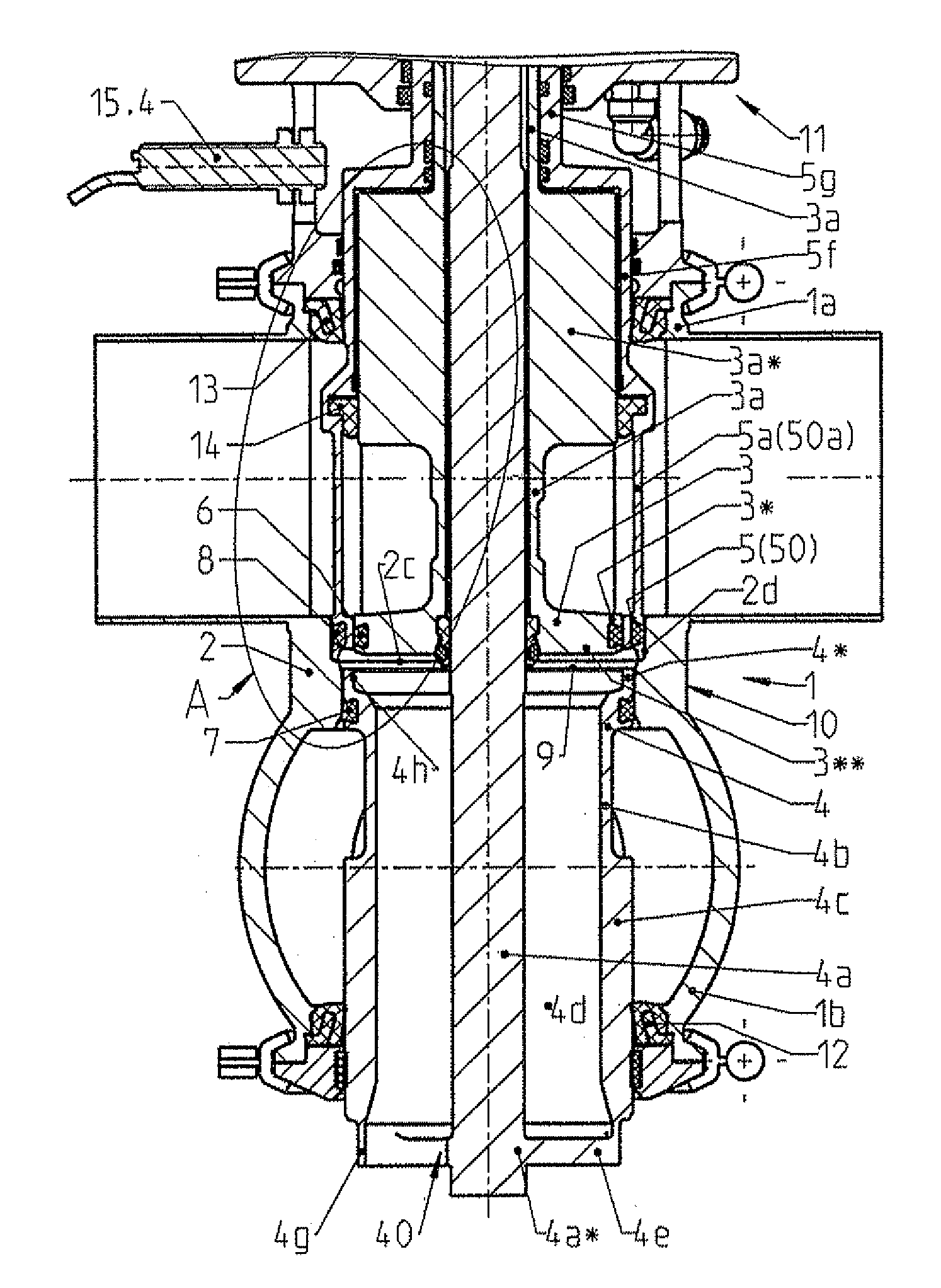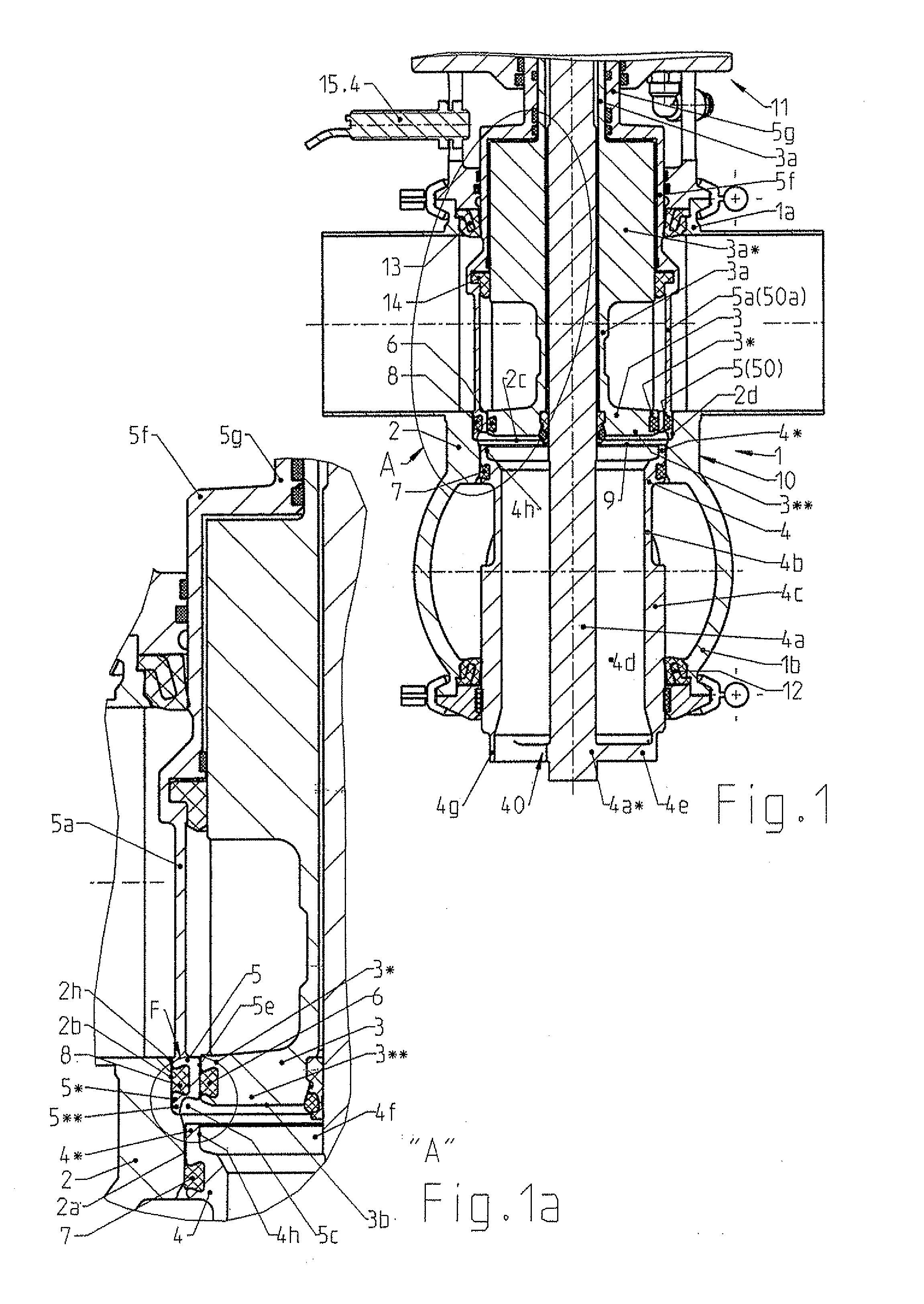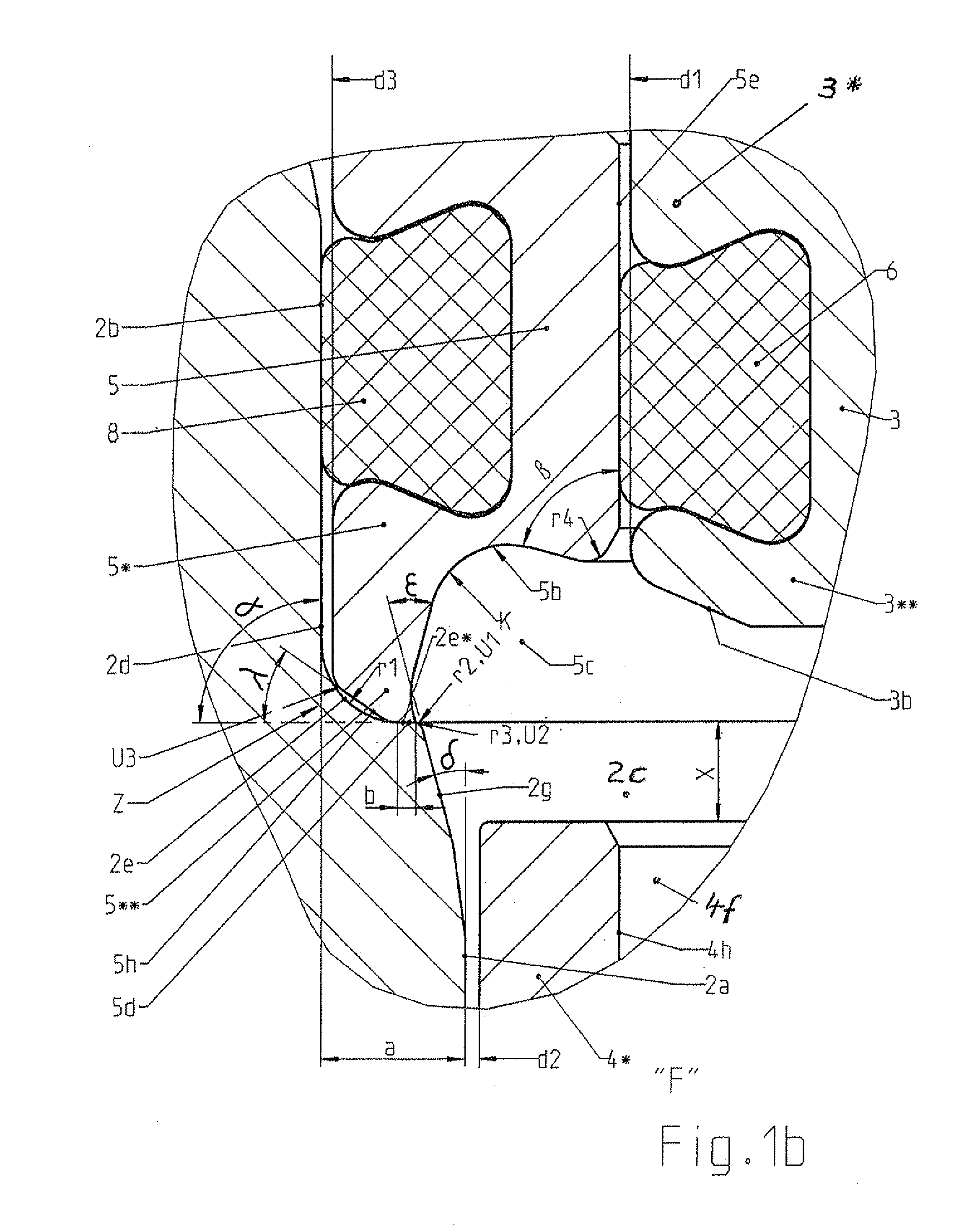Seat cleaning-Capable Double -Seat Valve
a seat cleaning and double seat technology, applied in the direction of multiple way valves, valve arrangements, thin material handling, etc., can solve the problems of direct impact of seat cleaning flow on the surface delimiting the leakage cavity, best leakage resistance, and constant counterproductive effect of seat cleaning flow
- Summary
- Abstract
- Description
- Claims
- Application Information
AI Technical Summary
Benefits of technology
Problems solved by technology
Method used
Image
Examples
first embodiment
[0072]The double-seat valve 1 (FIGS. 1, 1a, 1b) according to the invention in an underlying first embodiment consists mainly of a valve housing 10 with a first valve housing 1a arranged on the top side, with respect to its vertical normal position, and a second valve housing 1b arranged below it, two independently movable closing elements 3 and 4 with the respectively arranged displacement rods 3a or respectively 4a and a first seat ring 2, which establishes a connection between the valve housing parts 1a, 1b via an inside connecting opening 2c.
[0073]An axially relocatable, cylindrical ring-like slide part 5 is received radially outside in a sealing manner in a cylindrical third seat 2b designed in the upper part of the connecting opening 2c, which is formed there by a ring-like first recess 2d (FIGS. 1, 1b), and the slide part 5 forms radially inside a cylindrical first seat 5e, which runs coaxially to the connecting opening 2c, in a passage hole 5i (see FIG. 3) connected with the...
second embodiment
[0101]An underlying second embodiment of the double-seat valve 1 according to the invention is characterized in that there is now a fixed cylindrical second seat ring 50 in place of the axially relocatable, cylindrical, annular slide part 5 (FIG. 1). The embodiment with respect to this is not shown in FIG. 1, but rather only the reference numbers of the two modified components 50, 50a are specified at the locations in question. The second seat ring 50 is supposed in an unrelocatable manner via at least one modified connecting bar 50a in the first valve housing part 1a, and namely on its side lying opposite the second seat ring 2. A seat ring supported in this respect is generally known from EP 0 646 741 A1. Since the second seat ring 50 is axially unrelocatable, the seat cleaning of the first closing element 3 now takes place such that the first closing element 3 is transferrable to its seat cleaning position through a first partial lift T1 directed opposite the opening movement. Th...
PUM
 Login to View More
Login to View More Abstract
Description
Claims
Application Information
 Login to View More
Login to View More - R&D
- Intellectual Property
- Life Sciences
- Materials
- Tech Scout
- Unparalleled Data Quality
- Higher Quality Content
- 60% Fewer Hallucinations
Browse by: Latest US Patents, China's latest patents, Technical Efficacy Thesaurus, Application Domain, Technology Topic, Popular Technical Reports.
© 2025 PatSnap. All rights reserved.Legal|Privacy policy|Modern Slavery Act Transparency Statement|Sitemap|About US| Contact US: help@patsnap.com



